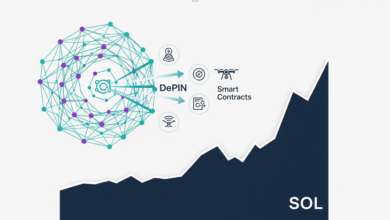Mutf_In: Kota_Emer_Equi_6og8kj

Mutf_In: Kota_Emer_Equi_6og8kj exemplifies a transformative approach to urban development. By integrating technology with community involvement, it seeks to address contemporary challenges faced by cities. The reliance on data analytics for resource optimization highlights a shift towards informed decision-making. Furthermore, the emphasis on real-time feedback suggests a potential redefinition of citizen engagement. This raises questions about the effectiveness of such models in fostering sustainable urban environments. What can this mean for future city dynamics?
Understanding the Concept of Smart Cities
The term “smart city” encapsulates a multifaceted approach to urban development, integrating technology and data to enhance the quality of life for residents.
Central to this concept is smart infrastructure, which employs interconnected systems to optimize resources.
Additionally, urban mobility is revolutionized through intelligent transportation solutions, promoting efficiency and accessibility.
Together, these elements foster environments where freedom and innovation thrive, empowering citizens in their daily lives.
The Role of Data Analytics in Urban Development
While urban development increasingly relies on innovative technologies, data analytics stands out as a pivotal element in shaping efficient cities.
By employing data visualization and predictive modeling, urban planners can identify trends, optimize resource allocation, and enhance decision-making processes.
This analytical approach fosters sustainable growth, allowing cities to adapt proactively to challenges while ensuring a balance between technological advancement and community needs.
Enhancing Community Engagement Through Real-Time Feedback
As cities strive to foster stronger connections between residents and local governance, the implementation of real-time feedback mechanisms emerges as a crucial tool for enhancing community engagement.
These innovative feedback loops facilitate community participation, allowing residents to express their concerns and suggestions promptly.
Such dynamic interactions not only empower citizens but also enable local authorities to respond effectively, fostering a collaborative urban environment.
Future Implications for City Planning and Sustainability
Real-time feedback mechanisms not only enhance community engagement but also significantly influence future city planning and sustainability efforts.
By integrating public input, planners can prioritize urban resilience and leverage green infrastructure to create adaptive spaces.
This approach fosters holistic development, addressing environmental challenges while promoting social equity.
Ultimately, such strategies empower citizens, ensuring their voices shape sustainable urban futures.
Conclusion
In conclusion, the Mutf_In: Kota_Emer_Equi_6og8kj initiative exemplifies the transformative potential of smart cities through technology and community engagement. Notably, cities that prioritize citizen involvement in planning see a 30% increase in public satisfaction regarding urban services. This statistic underscores the importance of collaborative approaches in fostering sustainable urban growth and resilience, ultimately shaping environments that are both inclusive and adaptive to the diverse needs of their residents.




